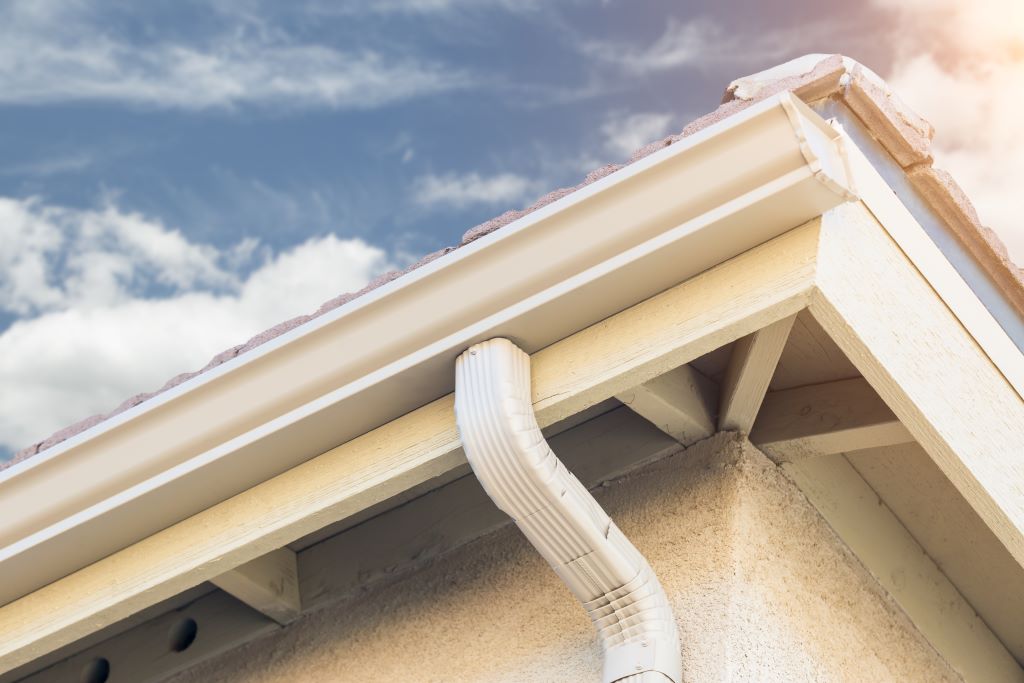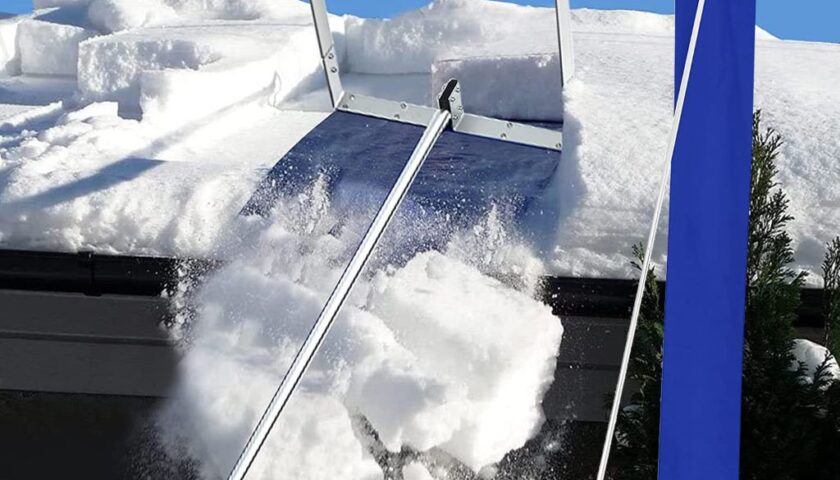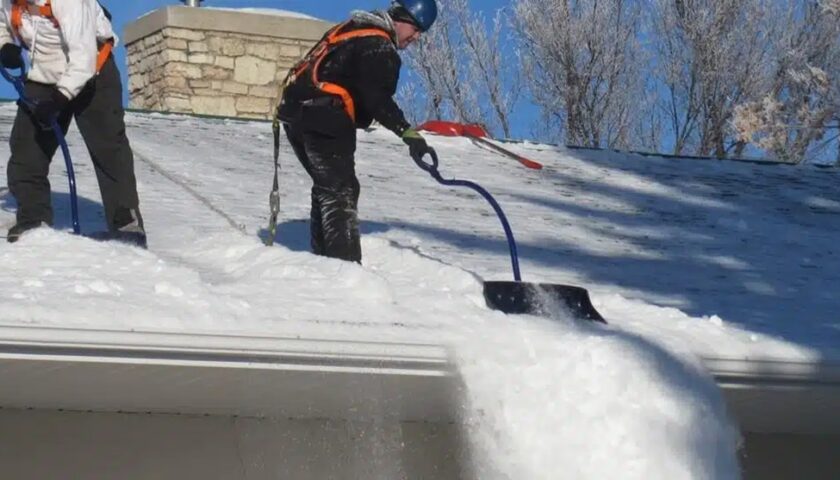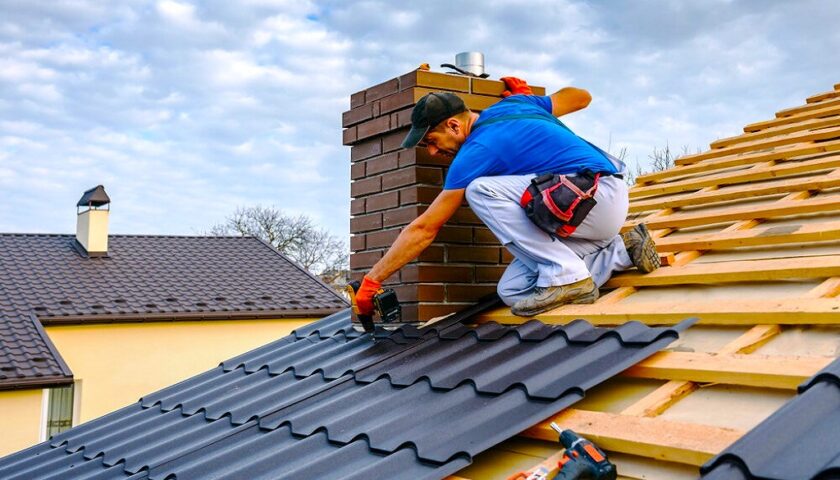Installing gutters with the right amount of slope is extremely important in effectively preventing water damage. A properly sloped gutter system ensures that water flows smoothly through the gutters and away from your home’s foundation, preventing water from pooling in spots.
Measuring slope may seem like a tricky task, but it’s a straightforward process once you understand the basics. In this detailed guide, we’ll walk you through the entire process step-by-step, so you can properly install a gutter system with the correct slope to protect your home from water damage.
Why Slope Matters
Gutters need to slope slightly downward to allow gravity to pull water to the downspouts. The ideal slope is 1/4 inch for every 10 feet of gutter. This provides enough angle for water to flow while preventing speedy drainage. If the hill is too steep, water will rush through without allowing the gutter to fill fully. With too little slope, water can pool and overflow instead of draining properly.
A consistent slope is also essential for proper gutter function. If certain sections are steeper than others, water will accelerate through the more vertical parts and potentially overflow where the slope levels out. Measuring and establishing the proper gutter slope ensures the gutter has an even incline throughout its entire length.
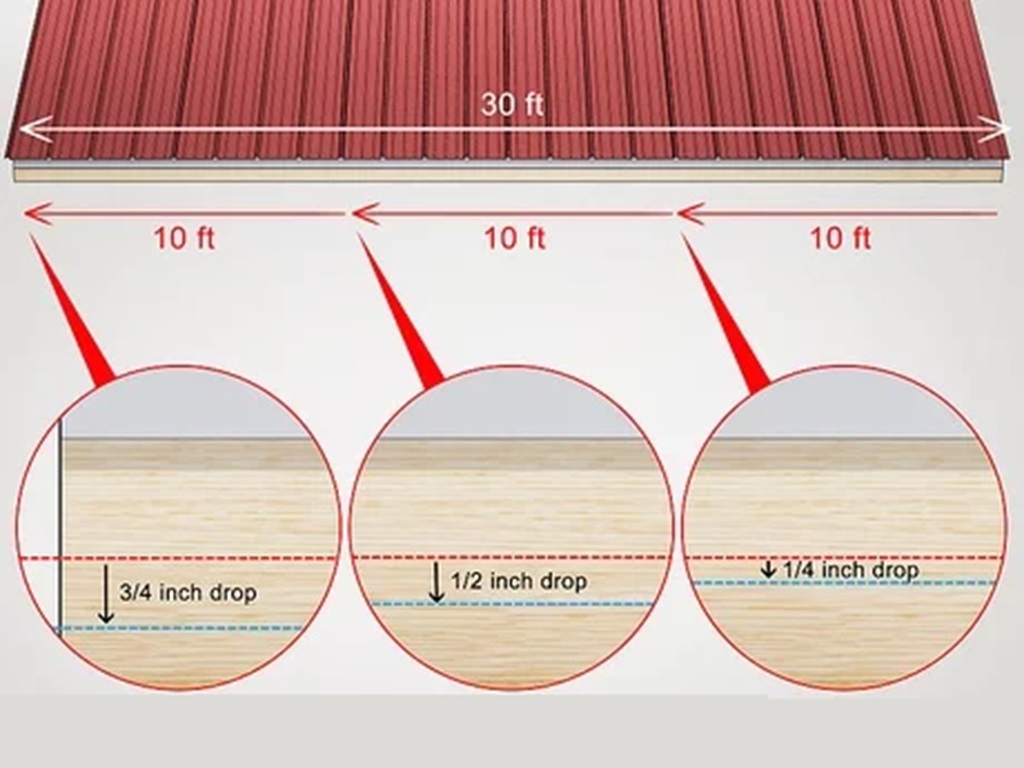
How to Measure Slope
Measuring gutter slope involves simple math using rise and run measurements. Here are the basic steps:
Gather Materials
- Tape measure
- Level
- Pencil
- Paper
Measure Run
The run is the horizontal distance the gutter covers. Measure the total length of the gutter from one end to the other. For example, if you have a 30-foot-long gutter, 30 feet is your run.
Please write down the run measurement, as you’ll need it for the rise calculation.
Determine Rise
The rise is how much height the gutter gains over the horizontal run. Using the example above with a 30-foot run, the rise would be 3/4 of an inch (the recommended 1/4 inch per 10 feet).
To find the rise, divide the run by ten and multiply that number by 1/4. Using our 30-foot example:
- 30 divided by 10 = 3
- 3 multiplied by 1/4 (or 0.25) = 0.75 inches.
So, for a 30-foot run, the rise should be 0.75 inches. Write down your rise number.
Mark Slope
Now, use the rise and run measurements to mark the desired slope. Start by snapping a chalk line where you want the top edge of the gutter to be.
Place one end of the level at the starting point and raise it until you calculate the rise amount. For example, on our 30-foot gutter with a 0.75-inch rise, you’d lift the level 0.75 inches.
With the level lifted to match the rise, make a mark at the other end of the gutter run. The chalk line and this mark give you the necessary points to install the gutter with proper slope.
Double Check
It’s always intelligent to validate your measurements. An easy way to do this is by using a smartphone-level app or an optical level. Place the level in the center of the gutter run and see if it reads the expected slope rise. For our example, it should show around 1/4 inch drop for every 10 feet or 0.75 inches over 30 feet.
If the level shows something different than your calculation, re-measure and adjust until it’s accurate.
Installing the Gutter
Once you’ve measured the slope and marked reference points, installing the gutter is straightforward:
- Snap a chalk line where the front edge of the gutter will be.
- Attach gutter brackets to the fascia, aligned with the chalk line, at the appropriate spacing.
- Place one end of the gutter at the starting point.
- Rest the other end on the marked slope line. The gutter should align cleanly.
- Nail the gutter to the fascia brackets. Go back and double-check the slope with your level.
- Connect downspout outlets and end caps.
Following the rise and run measurements ensures your gutters have just the proper slope for optimal performance. Take time to measure carefully and validate with a level for best results. Proper drainage will save you from headaches down the road.
5 Key Benefits of Proper Gutter Slope
Installing gutters with an ideal slope provides several advantages:
- Enables complete drainage – The proper slope lets gutter water flow unimpeded to downspouts.
- Prevents overflowing – Consistent slope avoids low spots where water can pool and spill over.
- Reduces gutter maintenance – Smooth drainage with no clogs from debris buildup.
- Lessens interior water damage – No leaks or seepage into exterior walls from overflow.
- Extends gutter lifespan – Even water flow reduces strain and deterioration.
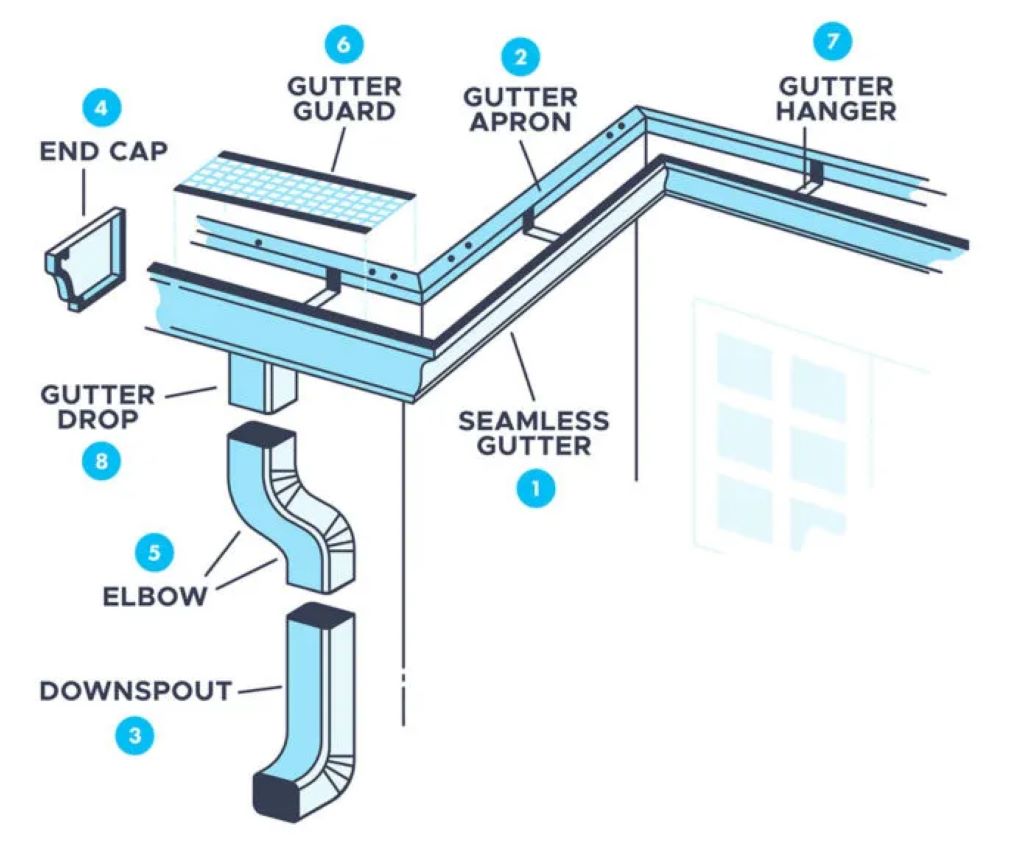
5 Common Gutter Slope Problems
Some common issues can develop if gutters don’t have adequate slope:
- Ponding water – Dips in the slope cause water to pool instead of draining fully.
- Leaking joints – Flat areas pressure gutter seams, allowing water to leak.
- Overflowing gutters – Low slope causes water to overfill and pour over the sides.
- Inconsistent flow – Sections with less slope accumulate debris and clog.
- Downspout backups – Insufficient angle prevents smooth water flow into downspouts.
Careful slope measurement helps avoid these problems. But if issues pop up, re-checking and adjusting the slope may be necessary.
FAQs
What are the standard slope measurements?
The recommended slope is 1/4 inch of rise per 10 feet of gutter run. This equals a slope of 1 inch for every 40 feet.
How accurate do I need to be when measuring?
It’s ideal to measure within 1/8 inch. But anything within 1/4 inch will sufficiently get the job done.
What if my roofline isn’t perfectly straight?
You’ll need to measure the slope in each gutter section independently if the roofline has multiple angles.
Can I use a laser level to measure the slope?
Yes, laser levels work great. Position it based on your rise calculation to project the desired slope line.
Should new gutters match my existing slope?
It’s best to use the recommended 1/4 inch per 10 feet even if existing gutters were installed differently.
Conclusion
Adequately sloped gutters are critical for controlling roof runoff and protecting your home. As homeowners increasingly seek cost-effective and durable roofing options, slate roofing is becoming unpopular. In light of this shift, it’s crucial to explore alternatives and, when installing gutters, take the time to carefully calculate the ideal rise and run. Measure and mark reference points to ensure the installed gutters have a consistent incline that allows complete drainage. A proper slope prevents many problems, saving you time, money, and frustration. With an accurate slope measurement and quality installation, your gutters will function smoothly for maximum longevity.

